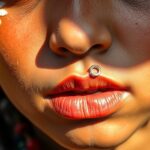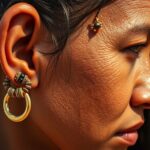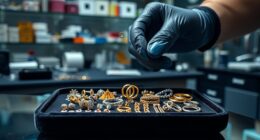Family piercing traditions are rich in culture and meaning, connecting you to your heritage and loved ones. By sharing these rituals, you mark significant milestones like birthdays or coming-of-age ceremonies, each piercing serving as a symbol of personal growth. Often practiced in families, these traditions foster bonds and preserve stories across generations. From ancient customs to modern expressions, body modifications reflect identity and shared experiences. Engaging in these family rituals not only affirms your place within the family but also honors cultural narratives. There's much more to explore about how these practices shape connections and identities within families.
Key Takeaways
- Family piercing traditions often mark significant life events, creating meaningful memories and deepening familial bonds across generations.
- Shared experiences during piercing rituals foster unity and belonging, reinforcing cultural identity within families.
- Generational practices in body modification encapsulate stories of love, empowerment, and cultural heritage passed down through family narratives.
- Specific ages and methods for piercings are dictated by cultural significance, ensuring continuity of traditions over time.
- Modern trends and social media promote family body modification practices, blending fashion with cultural expression and individual identity.
Historical Overview of Body Modification
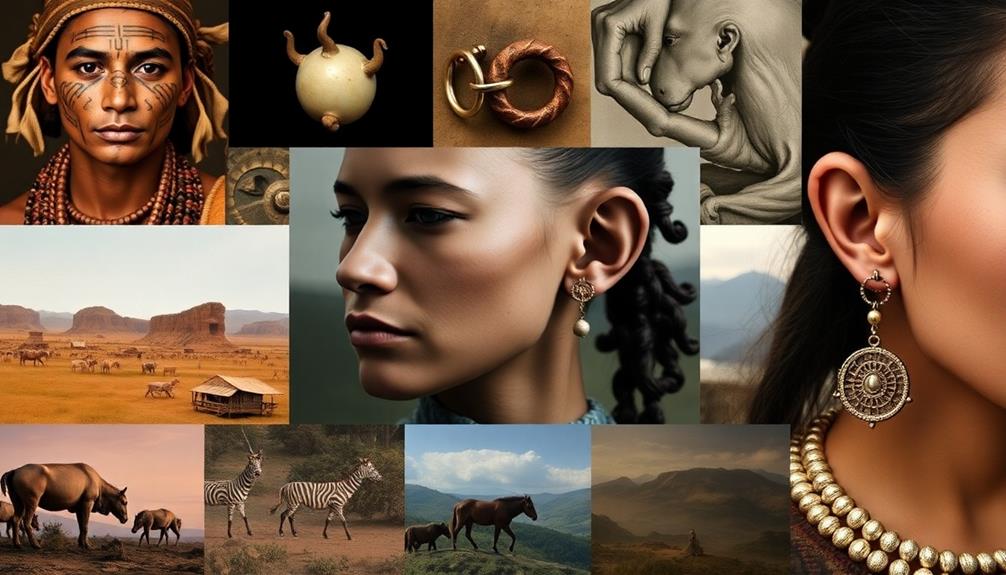
Body modification has a rich history that stretches back thousands of years, with practices like piercing and tattooing found in ancient civilizations such as Egypt and Rome. In these societies, body modifications served as symbols of wealth and social status, deeply intertwined with cultural identity.
For instance, the earliest known tattooed individual, Ötzi the Iceman, who lived around 5,000 years ago, illustrates the long-standing tradition of using body art for both spiritual and aesthetic purposes. Similarly, as explored in the context of Borderline Personality Disorder (BPD), the significance of personal expression through body modifications can reflect deeper emotional experiences and challenges.
Tribal cultures, especially in Africa, practiced scarification as a form of body modification, signifying rites of passage and marking one's social standing. These ancient practices reveal how body modifications have long been crucial components of cultural identity, allowing individuals to express personal and communal beliefs.
However, the significance of these modifications has shifted over time. In the 19th century, missionary influence led to a decline in traditional tattoo practices, yet recent cultural revival movements have sparked renewed interest in ancient customs.
As you explore body modifications today, you'll see how they continue to reflect the evolving nature of cultural identity, blending history with modern expression.
Rites of Passage and Family Traditions
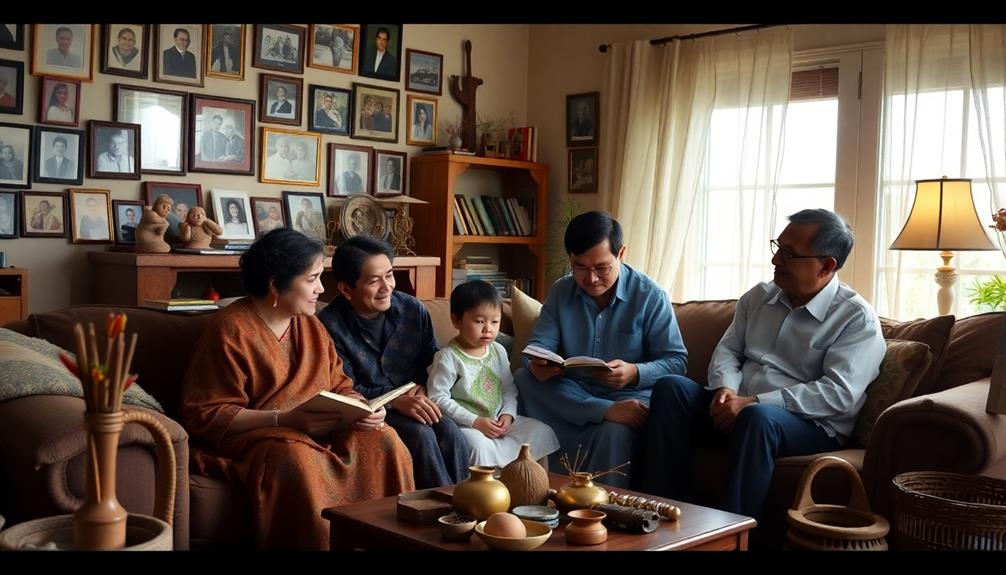
Throughout various cultures, family traditions surrounding body piercings often act as meaningful rites of passage. These traditions mark significant life changes, such as reaching adulthood or celebrating cultural milestones. For instance, in the Maasai community, ear stretching is a rite of passage for young boys, signifying their maturity and readiness for adult responsibilities.
Such rites can mirror the importance of clear communication during a breakup, as both experiences involve significant emotional changes and personal growth. Additionally, the supportive nature of these family traditions often fosters a sense of belonging, similar to how strong communication skills enhance relationships the importance of closure.
When you participate in these family traditions, you're not just undergoing body modification; you're embracing a deeper connection to your heritage. Many families choose matching piercings or styles, symbolizing unity and shared values. This act can create a strong familial bond, intertwining personal identity with cultural narratives.
Receiving a piercing within a family setting fosters a sense of belonging, reinforcing the importance of those cultural milestones in your life. It's an opportunity to honor your ancestry while acknowledging your growth and transformation.
As you partake in these rites of passage, you carry forward a legacy that connects generations, making each piercing a reflection of both individuality and family ties.
Cultural Significance of Piercing
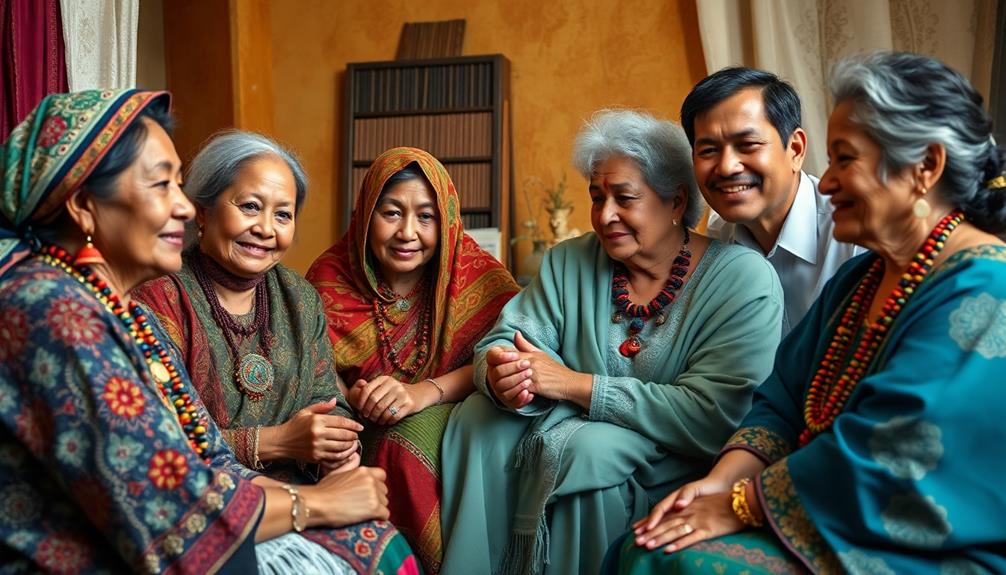
When you explore the cultural significance of piercing, you'll uncover rich histories that connect families and communities.
Different cultures have their own traditions and rituals that transform body piercings into symbols of identity and status.
Historical Piercing Practices
Piercing practices hold a rich historical significance across various cultures, often intertwining with identity, status, and spirituality. You might find it fascinating that body modification through piercings dates back to ancient civilizations.
In Egypt, ear and nose piercings symbolized wealth and status among royals, showcasing how these adornments reflected social hierarchy. Similarly, ancient Roman soldiers wore nipple rings, marking bravery and military rank.
In India, nose piercings are deeply rooted in cultural identity, often signifying a woman's marital status and beauty standards. As you explore various tribal cultures like the Maasai and Kayapo, you'll see unique piercing practices that serve as rites of passage and expressions of community identity. These piercings aren't merely decorative; they hold profound meaning within their communities.
Additionally, historical records indicate that body piercings have spiritual and ritualistic purposes. Many cultures attribute protective qualities to specific piercings, showing how these practices connect to beliefs and traditions.
Understanding these historical piercing practices enriches your appreciation for body modification and its role in shaping cultural narratives throughout time.
Family Traditions and Rituals
Family traditions surrounding body piercings often play an essential role in marking significant life events, creating lasting memories that strengthen connections between generations. These practices often serve as rites of passage, celebrating milestones like birthdays or coming-of-age ceremonies. Through these rituals, families can honor their cultural identity and embrace their family heritage.
In many Indigenous cultures, specific piercing rituals symbolize the continuity of traditions, passing down cultural values from one generation to the next. You might find that some families choose matching or themed piercings, fostering a sense of unity and belonging that reinforces their shared history.
This sense of togetherness not only connects family members but also highlights the importance of cultural identity. Historically, these traditions have expressed social status and connection to ancestral practices.
By participating in family piercing traditions, you're not just marking a moment; you're affirming your place within a broader cultural narrative. This powerful connection to family heritage enriches your life story and deepens your understanding of where you come from.
Ultimately, these rituals nurture familial bonds, ensuring that the significance of body modification continues to thrive across generations.
Symbolism and Identity
Body piercings embody a rich tapestry of identity and personal expression, serving as a canvas for individuals to showcase their beliefs and cultural heritage. These body modifications aren't just fashion statements; they carry profound symbolism that reflects who you are.
In the sphere of relationships, the act of sharing and discussing the meanings behind such modifications can deepen emotional connections, fostering understanding and acceptance among family members.
Consider the following aspects of piercing's cultural significance:
- Rites of Passage: In many tribal cultures, piercings mark significant life changes, such as maturity or social status.
- Rebellion and Self-Expression: Movements like punk have used body piercings to challenge societal norms, with icons showcasing defiance and individuality.
- Spiritual Beliefs: Certain piercings are believed to protect against evil spirits or enhance one's spiritual identity, linking you to your ancestry.
- Community and Subculture: Groups such as goth, BDSM, and queer communities utilize piercings to convey personal values and shared identity, enriching their cultural heritage.
Personal Narratives and Family Bonds
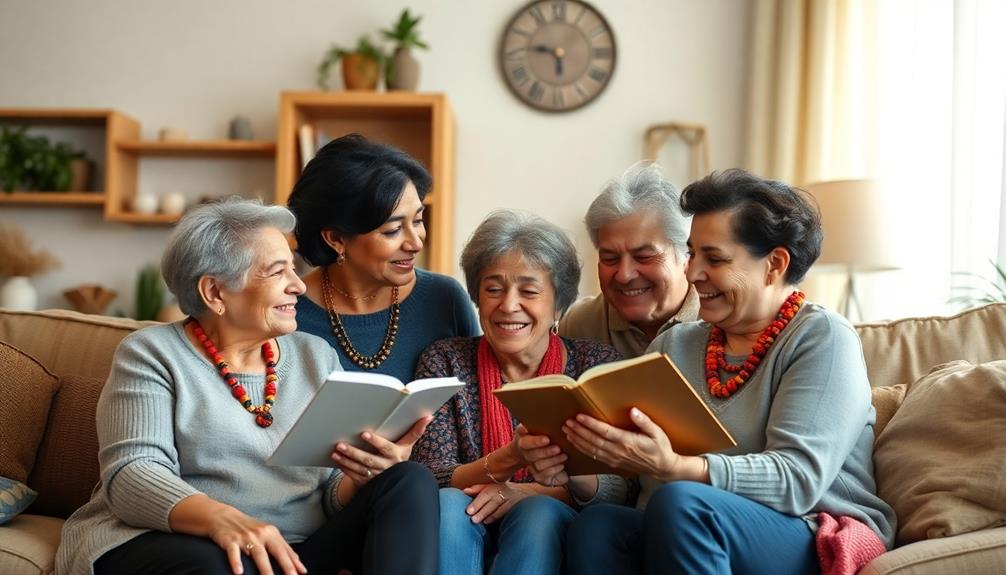
When you think about family piercing traditions, you might recall the stories passed down through generations.
These shared experiences not only mark personal milestones but also strengthen the bonds that tie your family together.
Each piercing carries a narrative of love, empowerment, and connection that enriches your family's heritage.
Generational Body Modification Practices
Throughout generations, many families have woven body modification traditions into the fabric of their identities, marking significant life moments with meaningful rituals. These practices often revolve around piercings, creating connections that bind family members together.
You might find that these generational practices include:
- Rite of Passage: Many families choose specific milestones, like birthdays or coming-of-age ceremonies, to perform piercings.
- Cultural Significance: Some cultures maintain strict rituals, dictating particular ages or methods for body modifications.
- Ancestral Honor: Families may select piercing designs or placements that reflect their cultural heritage, reinforcing their identity.
- Community Sharing: Social media allows younger generations to explore and share their family's body modification traditions, fostering a sense of continuity.
These personal narratives highlight the emotional connections formed during these experiences.
Whether it's a mother guiding her daughter through her first ear piercing or siblings supporting each other, these moments become cherished memories.
Through body modification traditions, families not only celebrate individual milestones but also strengthen their bonds, creating a rich tapestry of shared history and connection.
Shared Family Experiences
Many families find that shared piercing experiences create lasting bonds, transforming simple acts into profound moments of connection. These shared experiences often involve multiple generations coming together, crafting memories that deepen familial relationships.
Think about how many children receive their first ear piercings from parents or grandparents; these moments mark significant life events, serving as cultural rites of passage within the family. The emotional connections formed during these experiences can echo the dynamics seen in relationships affected by borderline personality disorder, where interpersonal bonds are vital yet can be tumultuous.
Celebrating milestones like coming-of-age or significant achievements through collective piercing sessions further solidifies these cultural practices. The act of passing down body modification traditions, whether it's a specific style of piercing or a cherished piece of jewelry, fosters a sense of identity and continuity.
You might find that discussing these choices opens up conversations about personal empowerment and self-expression, as family members support each other's decisions and embrace unique aesthetics.
These moments create not just memories but also a shared understanding of what it means to be part of a family. In this way, body modification becomes more than a personal choice; it transforms into a celebration of heritage, connection, and individuality, enriching the family's narrative.
Spiritual Connections in Body Modification
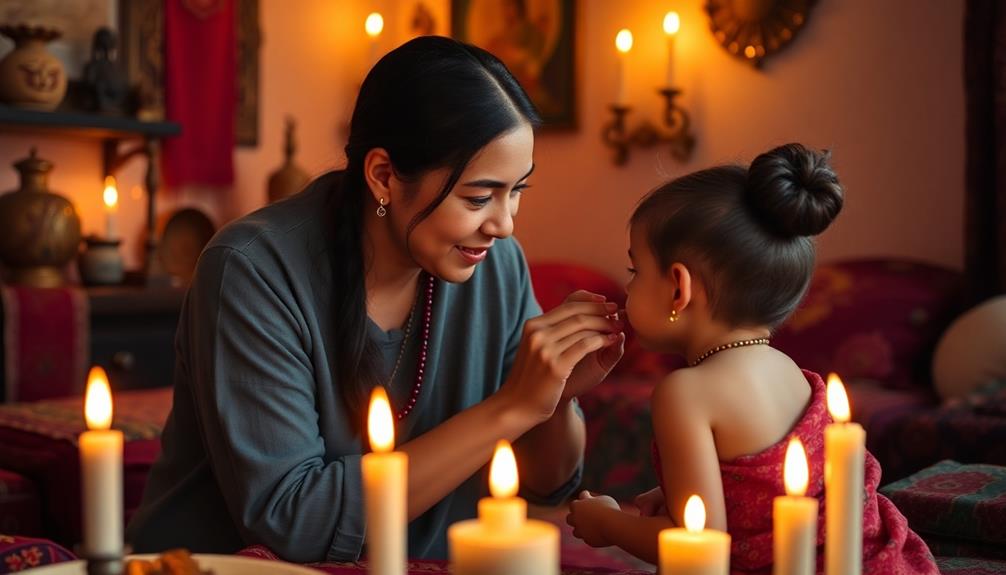
Body modification practices often serve as profound spiritual rituals, connecting individuals to their heritage and marking notable life changes. These transformations often carry deep spiritual significance, serving as rites of passage that reflect personal beliefs and cultural identity.
Here are some ways body modifications create spiritual connections:
- Ancestral Bonds: In tribal societies, modifications like scarification or piercings establish a link with ancestors, believed to provide protection and guidance.
- Ritual Healing: Many see body modifications as a form of spiritual cleansing, where the physical pain leads to emotional or spiritual growth.
- Cultural Empowerment: Specific practices, such as labia piercings after childbirth, symbolize recovery and empowerment, celebrating the shift into motherhood.
- Expressing Beliefs: Groups like the Church of Body Modification emphasize the importance of these alterations as expressions of individual spiritual beliefs, connecting the physical with the divine.
Engaging in these practices can deepen your understanding of your cultural heritage while fostering a sense of belonging.
Whether viewed as a personal journey or a community tradition, body modifications greatly enrich the spiritual landscape of your life.
Influences of Modern Trends
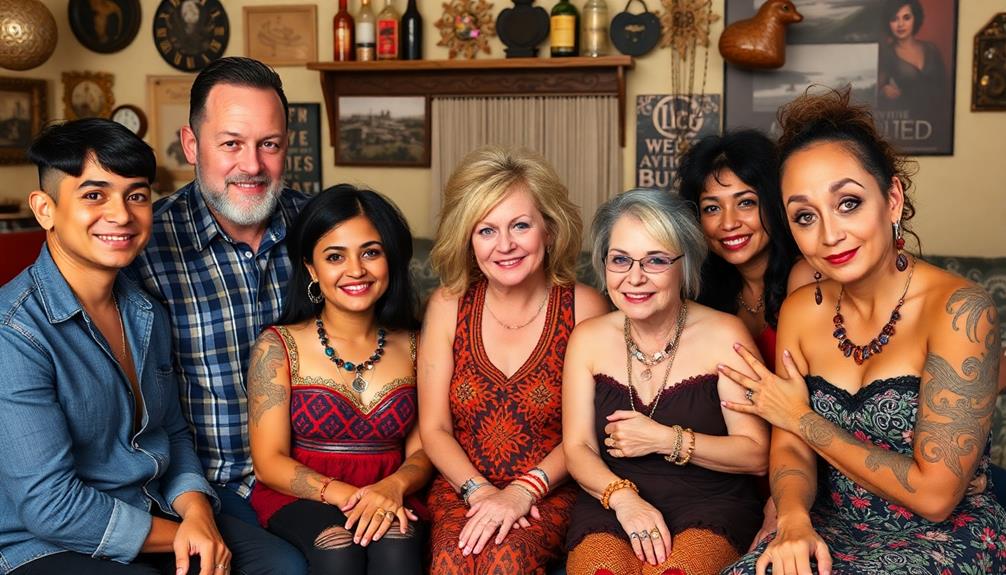
As spiritual connections in body modification evolve, modern trends greatly shape how families approach piercing traditions. Social media platforms like Instagram and TikTok have become powerful influencers, showcasing diverse body piercings and encouraging others to adopt fresh styles. You might find yourself inspired by the latest trends, often driven by celebrity endorsements that elevate specific piercings into the spotlight.
This cultural shift has made body modifications more normalized, blurring the lines between health and harm, and allowing families to embrace and share their unique traditions.
With piercing studios and jewelry now more accessible than ever, you can easily participate in these evolving practices. Families often weave their narratives around body modifications, blending fashion and individuality into a shared experience.
This fusion fosters a deeper connection, as each piercing carries personal significance and reflects family traditions. As you explore these modern trends, you might find yourself not just following a fad, but also honoring your family's legacy in a contemporary context.
Ultimately, these influences encourage you to create a unique identity, celebrating both personal expression and the bonds that unite your family through body piercings.
Generational Perspectives on Piercing
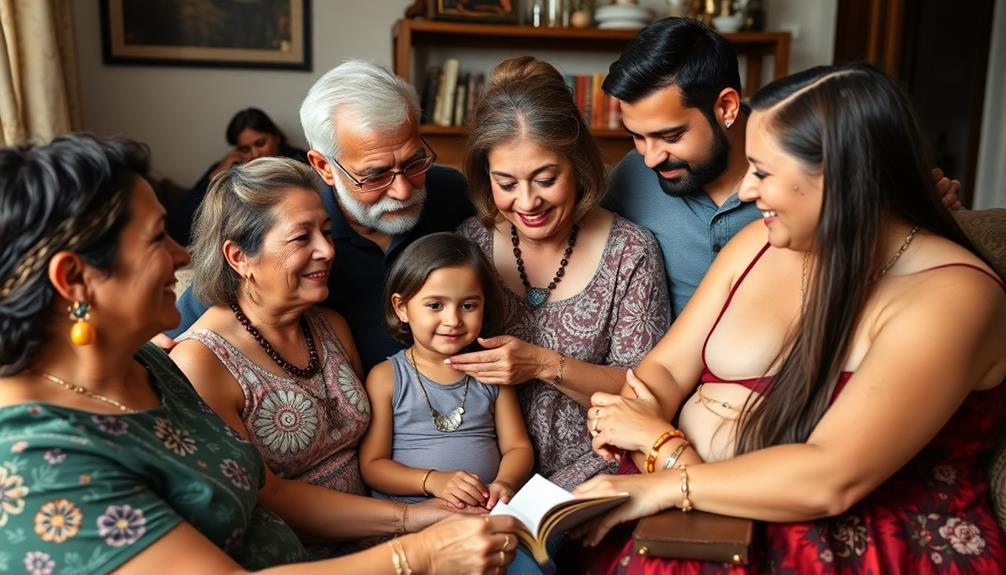
When you think about piercings in your family, consider how their significance has changed over generations.
For some, these body modifications mark important milestones, while others see them as a rite of passage tied to deeper cultural rituals.
Your family's customs around piercing can reflect both historical values and the evolving perspectives on personal expression.
Historical Significance of Piercings
Piercings have long served as a canvas for cultural expression, with each family weaving its unique narrative into the fabric of generational traditions.
When you explore the historical significance of piercings, you'll find that these body modifications carry profound meanings tied to cultural heritage.
Here are some key examples:
- Maasai Ear Stretching: This rite marks maturity and social status among young boys, showcasing a family's lineage.
- Ancient Egyptian Wealth: Royal families adorned themselves with gold earrings and nose rings, establishing a legacy of body modification.
- Nose Piercings in India: Integral to women's beauty and cultural identity, these piercings are celebrated in family ceremonies and passed down through generations.
- Kayapo Lip Plates: This rite of passage symbolizes beauty and maturity, a tradition cherished and maintained within families.
These examples illustrate how piercings aren't merely decorative; they embody family traditions and cultural identity.
Family Rituals and Customs
Cultural expressions through piercings often extend into family rituals and customs, highlighting the significance of these practices across generations. You might participate in family rituals that mark important life events, like a child's first ear piercing, celebrating their shift into a new phase of life. These moments strengthen family bonds and reinforce shared cultural identity.
In many cultures, body piercings serve as rites of passage, connecting you to your heritage. For instance, in Indigenous cultures, such as the Maasai, ear stretching signifies maturity, passed down through generations. This not only reflects social status but also deepens your understanding of cultural traditions.
Generational perspectives play an essential role in how you view body modifications. Older family members often share personal stories and the meanings behind their own piercings, shaping your acceptance and appreciation of these practices.
Sometimes, families incorporate spiritual elements, like blessings or prayers, into the rituals to honor both the tradition and the individual.
Ultimately, family rituals surrounding body piercings forge connections between past and present, enriching your cultural identity while celebrating the beauty of body modification.
Celebrating Milestones Through Modification
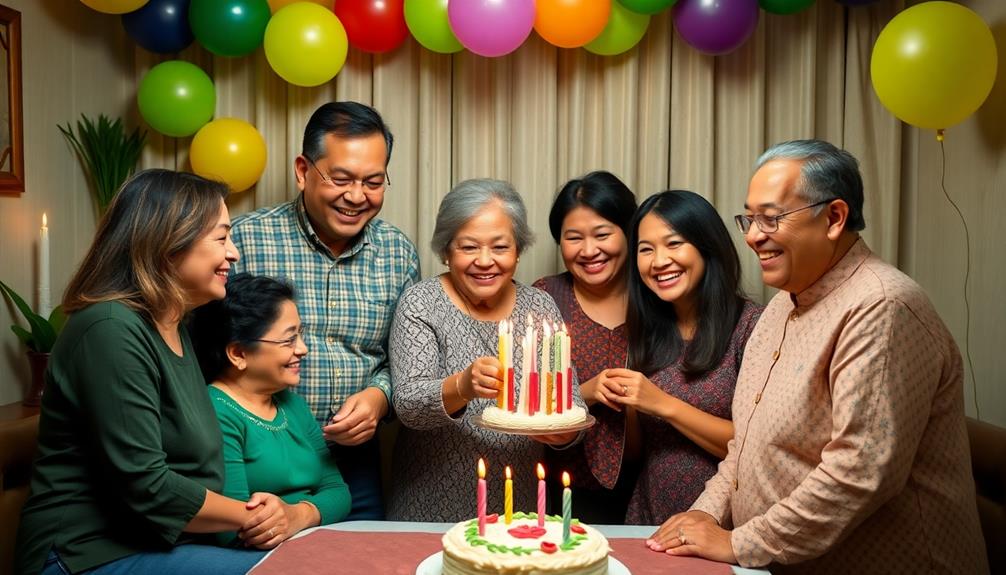
Milestones in life often call for special celebrations, and for many families, body modifications like piercings serve as meaningful markers of these moments.
These piercings not only signify personal growth but also reinforce cultural identity within the family. When you participate in such traditions, you're not just marking an occasion; you're embracing a shared history and legacy.
Here are some common milestones celebrated through body modification:
- Infant Ear Piercings: Often performed as a cultural norm, symbolizing familial bonds and heritage.
- Coming-of-Age Ceremonies: Marking the change into adulthood, these piercings reflect maturity and responsibility.
- Birthdays: Special age milestones may be commemorated with a new piercing, creating lasting memories.
- Rituals in Specific Cultures: For instance, the Maasai and certain Indigenous tribes use piercings to signify social status and belonging.
Challenges and Controversies Surrounding Piercing
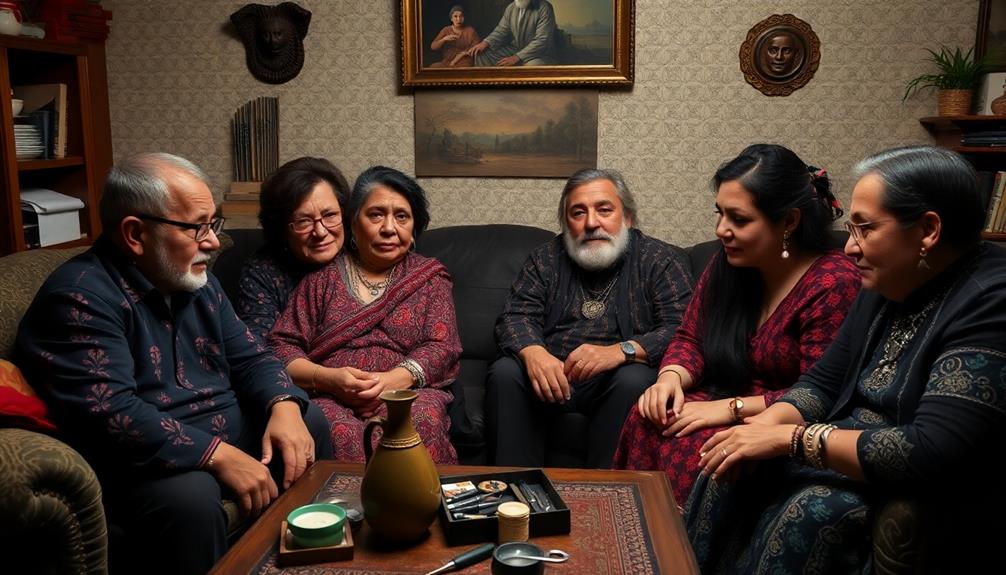
Steering through the world of body modifications can be fraught with challenges and controversies, particularly when it comes to family dynamics. As you explore piercing practices, you might find yourself at odds with older generations who view these modifications as inappropriate or unsafe. This often leads to generational divides, where traditional views clash with modern self-expression.
Health risks associated with body piercings, like infections and allergic reactions, further complicate discussions within families. These concerns prompt parents to question the safety and long-term implications of their children's choices. Additionally, cultural appropriation raises ethical debates, especially when practices from specific cultures are commercialized by outsiders.
Navigating these issues can be tough, especially when it comes to consent for minors. Parents often struggle to support their child's self-expression while ensuring their well-being.
Here's a quick overview of these challenges:
| Challenge | Description |
|---|---|
| Familial Disputes | Conflicts over what's deemed appropriate |
| Health Risks | Concerns about infections and allergic reactions |
| Generational Divides | Differences in attitudes towards body modifications |
| Cultural Appropriation | Ethical concerns over misusing cultural practices |
| Consent Issues | Balancing support with safety for minors |
Future of Family Piercing Traditions
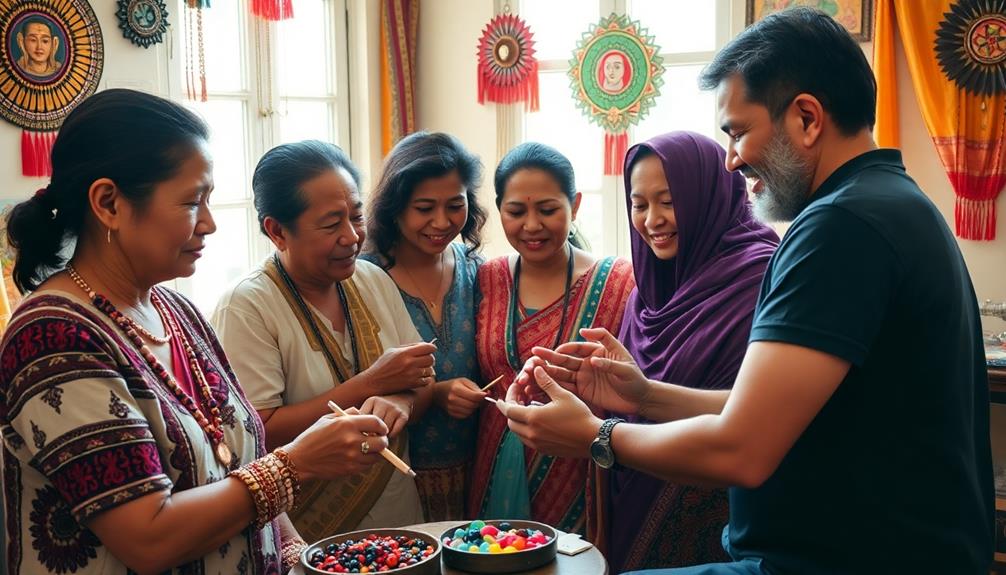
As families look to the future, piercing traditions are likely to evolve while still honoring their rich histories. You might witness a blending of the old and new, as contemporary society embraces body modification more openly.
Here are four ways family piercing traditions could transform:
- Modern Techniques: Families may adopt advanced piercing methods, ensuring safety and precision while keeping the significance intact.
- Social Media Celebrations: Sharing experiences online can foster a community that celebrates unique family piercing traditions, helping to preserve cultural heritage.
- Rite of Passage Events: You might see more families organizing ceremonies around piercings, turning them into significant life events that reinforce familial bonds.
- Custom Designs: Expect a rise in personalized piercings that reflect both tradition and individual style, merging cultural heritage with contemporary aesthetics.
These shifts will likely lead to a resurgence of family piercing traditions, reinforcing their importance as a form of identity and connection.
As you navigate this evolving landscape, you'll find that the essence of these practices remains, celebrating the beauty of body modification across generations.
Frequently Asked Questions
Are Piercings Considered Body Modification?
Yes, piercings are definitely considered body modifications. They alter your body's appearance for personal or cultural reasons. Each piercing can carry unique meanings, reflecting your identity, beliefs, or significant life events.
What Is the Cultural Significance of Piercings?
Piercings signify identity, express individuality, and connect you to cultural heritage. They mark rites of passage, symbolize rebellion, and reflect beauty standards. Embracing piercings allows you to honor traditions while celebrating your unique self.
What Cultures Use Body Modification?
Many cultures use body modification, including the Maasai with ear stretching, the Kayapo with lip plates, and Indian women with nose piercings. Each practice holds deep cultural significance, signifying beauty, maturity, or social status.
What Do Piercings Symbolize?
What do your piercings say about you? They symbolize identity, culture, and individuality. Whether marking maturity, expressing rebellion, or embracing beauty, each piercing reflects personal stories and societal shifts, connecting you to broader cultural narratives.
Conclusion
As the family tree grows, each piercing becomes a leaf, telling stories of love, courage, and heritage. Just like the rings of a tree, these modifications reveal the passage of time and the bonds that tie generations together. Embracing these traditions nurtures a rich tapestry of identity, reminding us that every mark carries the whispers of our ancestors. So, as you consider your own journey, remember: each piercing isn't just a choice; it's a legacy waiting to unfold.



